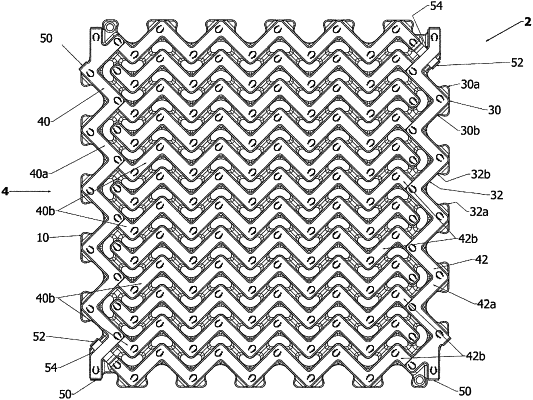| CPC A01M 29/24 (2013.01) [H05C 1/00 (2013.01); H05F 3/025 (2013.01)] | 19 Claims |

|
1. A barrier system, the barrier system comprising a first barrier component comprising:
a support member formed from an electrically insulating material and having a first major surface extending in a first plane, a second major surface extending in a second plane and one or more edges extending between the first and second major surfaces;
a first electrical conductor assembly comprising a first conductor member disposed on the first major surface of the support member;
a second electrical conductor assembly comprising a second conductor member disposed on the first major surface of the support member, the second conductor member spaced apart and electrically insulated from the first conductor member;
wherein each of the first and second conductor members comprises a plurality of conductor portions; and wherein the conductor portions of the first conductor member are interdigitated with the conductor portions of the second conductor member;
each of the first and second electrical conductor assemblies comprising an electrical contact member disposed on the one or more edges of the support member and extending from the first major surface of the support member towards the second major surface of the support member, each electrical contact member presenting a contact surface at the one or more edges of the support member for engagement by a contact surface of a corresponding electrical contact member of an adjacent corresponding second barrier component;
wherein each electrical contact member and the respective one or more edges of the support member are configured to connect with the corresponding electrical contact member and a respective edge of the adjacent corresponding second barrier component, with the connection being formed by the movement of the adjacent corresponding second barrier component relative to the first barrier component in a direction substantially perpendicular to the plane of the first major surface, the direction being from the first major surface towards the second major surface.
|